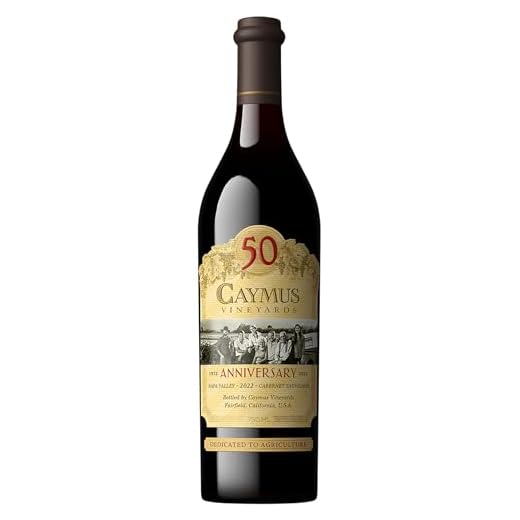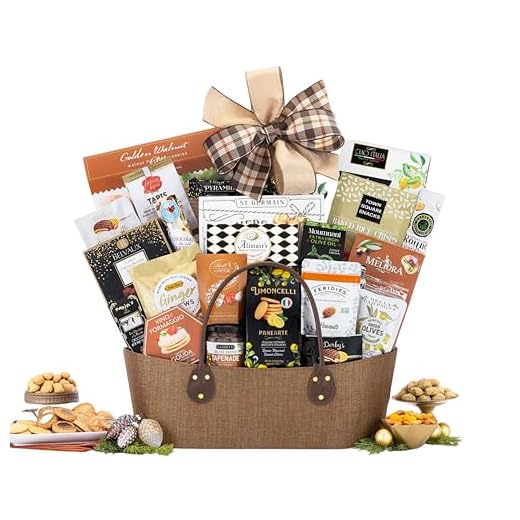



Investing around $15 to $30 for a quality selection is a prudent choice for enthusiasts seeking a pleasurable experience without breaking the bank. At this price point, you can find exceptional labels that deliver remarkable flavor profiles and craftsmanship. For a truly memorable occasion, consider exploring options priced between $30 and $60, where you’ll encounter more complexity and character in the glass.
When browsing shelves, look for regions renowned for their unique expressions. For instance, wines from Napa Valley or Bordeaux often yield excellent quality, but don’t overlook emerging regions where hidden gems await discovery. A careful examination of vineyard practices and vintage conditions will also provide insight into the potential of each selection.
Furthermore, remember to pay attention to the recommended pairings. A well-matched vintage can elevate a simple meal into an extraordinary experience. Engaging with local wine shops can also lead to fruitful conversations about recent arrivals and special finds. This personal touch often uncovers exciting choices that may not be readily available in larger retail environments.
Understanding Wine Pricing: Factors That Influence Cost
For those seeking quality in their selections, it’s essential to recognize key variables affecting price. Here’s a concise overview of these elements:
- Region: Wines from renowned areas like Bordeaux or Napa Valley typically command higher prices due to their established reputation and quality standards.
- Terroir: Specific environmental factors, including soil type, climate, and elevation, significantly influence flavor profiles and production costs, impacting the retail price.
- Production Techniques: Traditional methods, such as hand harvesting and aging in oak barrels, increase labor and material expenses, contributing to a higher final price.
- Vintage: A year’s climate conditions can greatly affect grape quality. Outstanding vintages often lead to increased demand and elevated prices.
- Winemaker Reputation: Established vintners with a history of excellence can charge more for their offerings, as their names often assure quality.
When exploring selections, consider these factors to assess value accurately. A higher price tag doesn’t always equate to superior quality; understanding the intricacies of wine production can help identify true gems in any price range.
Additionally, exploring lesser-known regions or emerging winemakers can yield exceptional finds at competitive prices. Stay curious and open-minded during your selections.
Comparing Price Ranges: Budget, Mid-Range, and Luxury Wines
For an enjoyable experience, I recommend spending between $10 and $20 for an entry-level selection. These options often deliver respectable quality, making them suitable for casual gatherings or everyday meals. Look for reputable brands and regions known for producing value-driven choices, such as Chile or Argentina.
Moving to the mid-range, which typically spans from $20 to $50, you’ll discover a broader variety of flavors and complexities. These selections often feature better craftsmanship and more diverse grape varieties. Regions like Napa Valley and Bordeaux are renowned for their offerings in this category. Exploring lesser-known producers can also yield delightful surprises at this price point.
Luxury selections, priced above $50, cater to those seeking exceptional qualities and unique characteristics. These high-end options often come from esteemed vineyards with limited production. Expect to taste exquisite depth and refinement, particularly from regions like Burgundy and Barolo. Investing in these wines can enhance special occasions, making them memorable.
Ultimately, selecting a favorite depends on personal preference and the intended occasion. Whether you’re enjoying a casual meal, hosting friends, or celebrating a milestone, understanding these price tiers can guide you toward satisfying choices.
Identifying Quality Indicators in Affordable Wines
Look for wines with a well-balanced profile, showcasing a harmonious blend of acidity, sweetness, and tannins. A balanced wine often indicates careful craftsmanship and attention to detail during production.
Examine the vintage. Some years yield exceptional fruit, while others may not perform as well. Researching specific vintages for regions of interest can reveal hidden gems that offer remarkable quality at lower prices.
Aroma and Flavor Complexity
Aroma is key; a range of scents, from fruity to earthy, often signifies quality. Swirl the glass and take a moment to inhale deeply. If you detect layered fragrances, this complexity can enhance your tasting experience.
On the palate, look for a wine that evolves as you sip. A good value choice typically presents multiple flavor notes, transitioning from one to another, indicating a well-crafted blend rather than a one-dimensional profile.
Finish and Structure
The finish is equally telling. A lengthy, pleasant aftertaste suggests quality. Wines that leave a lasting impression often indicate better production techniques and grape selection.
Pay attention to mouthfeel. A smooth, well-rounded texture denotes good vinification practices. Wines that feel harsh or overly tannic may not have been crafted with care, while those that glide effortlessly across the palate are worth considering.
Regional Variations: How Geography Affects Wine Prices
The location of vineyards plays a significant role in determining the cost of fermented grape products. Regions with established reputations, such as Bordeaux in France or Napa Valley in California, command higher prices due to their historical prestige and demand. For instance, a fine Cabernet Sauvignon from Napa can easily exceed $100, while comparable wines from lesser-known areas may be available for half that price.
Climate and Terroir
Climate directly influences the characteristics of grapes, which in turn affects pricing. Cooler regions may yield lower yields and higher acidity, often leading to unique flavor profiles that can demand premium prices. Conversely, warmer regions may produce more fruit-forward styles that are popular among casual consumers, typically resulting in more accessible price points. For example, wines from the Loire Valley offer excellent value due to their favorable climate and diverse terroir.
Production Costs and Regulations
In regions with stringent regulations, such as those in Italy’s DOCG system, the costs associated with compliance can elevate prices. The meticulous standards for grape cultivation and winemaking can limit supply, thereby increasing market value. Alternatively, areas with fewer restrictions often produce high-quality wines at lower prices, providing savvy shoppers with ample opportunities to discover exceptional options from emerging regions, such as those in South America or Eastern Europe.
Tips for Finding Great Value Wines in Retail Stores
Focus on lesser-known regions. Wines from emerging areas often provide excellent quality without the hefty price tag associated with more famous regions. Look for bottles from countries like Portugal, Chile, or Greece.
- Check for local producers. Often, smaller wineries offer remarkable selections at competitive prices.
- Explore blends. These can deliver complexity and flavor while keeping costs lower than single varietals.
- Seek out vintage variations. Some years produce better grapes at a lower cost; do your research on recent vintages from your favorite regions.
Visit the clearance section. Retailers frequently discount wines nearing the end of their shelf life, which can lead to fantastic deals.
- Look for reviews and ratings. Websites and apps that aggregate user reviews can guide you to highly rated selections within your budget.
- Engage with staff. Knowledgeable employees can recommend exceptional values and hidden gems.
- Attend tastings. Many stores host events featuring various selections, providing opportunities to sample before purchasing.
Consider alternative packaging. Cans and boxes can sometimes offer high-quality options at a fraction of the cost of traditional glass bottles.
Always check the label. Look for terms like “old vines” or “sustainable practices,” which often indicate quality without a premium price.
Lastly, trust your palate. Always prioritize your taste preferences over brand names; personal enjoyment is what truly matters.
Exploring Online Wine Marketplaces: Pricing Strategies
Utilize platforms like Wine.com, Vivino, and Total Wine for competitive pricing insights. These sites often showcase user reviews and ratings, aiding in determining fair market value.
Dynamic pricing is common in online marketplaces. Discounts during seasonal sales or special promotions can significantly reduce costs. Subscribe to newsletters for alerts on flash sales or exclusive offers.
Many retailers employ tiered pricing strategies based on demand and inventory levels. For example, a popular red may see prices fluctuate based on stock availability. Always compare similar products across multiple sites before making a purchase.
Utilizing comparison tools allows for an efficient analysis of different outlets. Websites such as Wine-Searcher provide real-time price comparisons and can identify the best deals across various online retailers.
Don’t overlook smaller, boutique sellers online. They often feature unique selections at competitive prices, which may not be found in larger stores. Engaging directly with these sellers can also lead to personalized recommendations and potential discounts.
Be aware of shipping costs, as they can impact the overall price. Some retailers offer free shipping thresholds, so consider purchasing multiple selections to maximize savings.
| Marketplace | Pricing Strategy | Notes |
|---|---|---|
| Wine.com | Dynamic pricing, seasonal sales | Sign up for alerts on flash sales |
| Vivino | User-driven pricing, reviews | Great for finding value based on ratings |
| Total Wine | Promotions, loyalty rewards | Check for local store availability |
| Wine-Searcher | Price comparison tool | Identifies best deals across retailers |
| Boutique sellers | Unique selections, potential discounts | Engage for personalized recommendations |
Understanding these strategies will enhance your ability to discover high-quality selections at reasonable prices. Don’t hesitate to explore various avenues and platforms for the best options available. Happy exploring!
When to Invest in Higher-Priced Bottles: Special Occasions
For milestone events like anniversaries or weddings, consider spending on premium selections. These moments deserve memorable flavors that enhance the experience. A well-chosen vintage can elevate a celebration, creating lasting impressions.
Holiday gatherings also present an opportunity to explore higher-end selections. Sharing these exquisite wines with family and friends fosters connection and enjoyment. Opt for a rich red or a complex white that pairs beautifully with festive meals.
Corporate events and client dinners often call for exceptional choices. A prestigious label can leave a positive impression on business associates, reflecting sophistication and attention to detail. Aim for wines that complement the menu, ensuring a seamless dining experience.
Traveling to renowned wine regions? Investing in unique local varietals can enhance your collection. These selections often tell a story of the terroir, making them perfect for intimate gatherings or as thoughtful gifts.
Lastly, don’t overlook personal milestones, such as birthdays or promotions. Celebrating achievements with a fine selection not only honors the occasion but also creates a tradition of savoring life’s successes. Experiment with pairings, like serving an elegant Pinot Noir with a perfectly cooked dish, perhaps how to cook fillet steak in a cast iron skillet.










